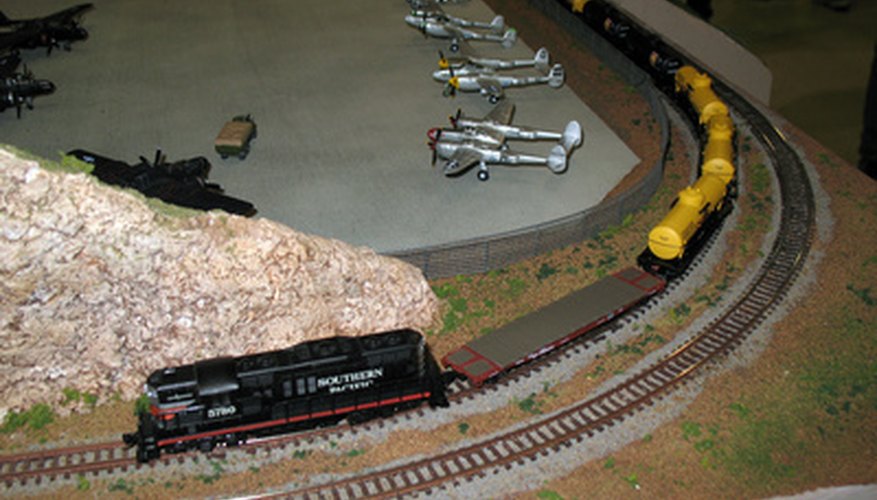Hornby train sets have been in production since 1920, when Frank Hornby's company released the first toy train set. Since then, Hornby has become a nationally recognised brand in the United Kingdom, and the company continues to manufacture new products every year. The model trains are designed to operate on an electric powered track that uses a power transformer to send a current through the track to the engines. Occasionally, the engines break down and require minor repair work. Repairs to engines can be done at home using traditional tools and recommended spare parts. Most repairs can be done in an hour.
Place the faulty engine on the work bench in an upside-down position. Make sure the train engine is fully supported. Use a C-clamp or wood vice if needed. Use the track rubber to clean off the wheels. Dirty Hornby wheels could result in loss of traction and mobility, so it is important to keep them clean.
- Hornby train sets have been in production since 1920, when Frank Hornby's company released the first toy train set.
- Dirty Hornby wheels could result in loss of traction and mobility, so it is important to keep them clean.
Inspect the tires on the engine. Make sure there are no chunks missing from the tires and there are no foreign substances on them. Ensure each tire still fits securely around the wheel rim. If a tire is loose, damaged or has a foreign substances on it, the best solution is to replace it. Unhook the tire carefully from the wheel and fit the new one onto the wheel rim.
- Inspect the tires on the engine.
- Unhook the tire carefully from the wheel and fit the new one onto the wheel rim.
Check the carbon brushes on the underside of the train. These are located under the metal plate between the wheels. Unscrew the metal plate with the screwdriver. Place the four screws into the clear plastic bag to keep them all together. Slowly lift the metal plate away from the train body. The carbon brushes are held in place by a spring and are likely to fall out with force if removed quickly. If the brushes are worn down, they will need to be replaced, as they will result in loss of motor power for the engine.
Remove the worn brushes and insert the new ones. The brushes will only fit one way, so be sure not to force them in. Screw the metal plate back into position.
Remove the wheels from the body of the engine. Inspect the gears on each set of wheels to make sure there are no teeth missing. If teeth are missing, the train will make more noise than usual and lose mobility, according to the New Railway Modellers website. Remove any broken gears from their spindle by lifting them out by hand. Replace with a new gear and lock it into position. When in position, the teeth should fit in between the other gear teeth.
- Remove the worn brushes and insert the new ones.
- Remove any broken gears from their spindle by lifting them out by hand.
Fit the wheels back into place and remove the engine from the C-clamp. Place the engine on the tracks and turn on the power transformer. Run the engine through a complete circuit to test the repairs.
